Equestrian
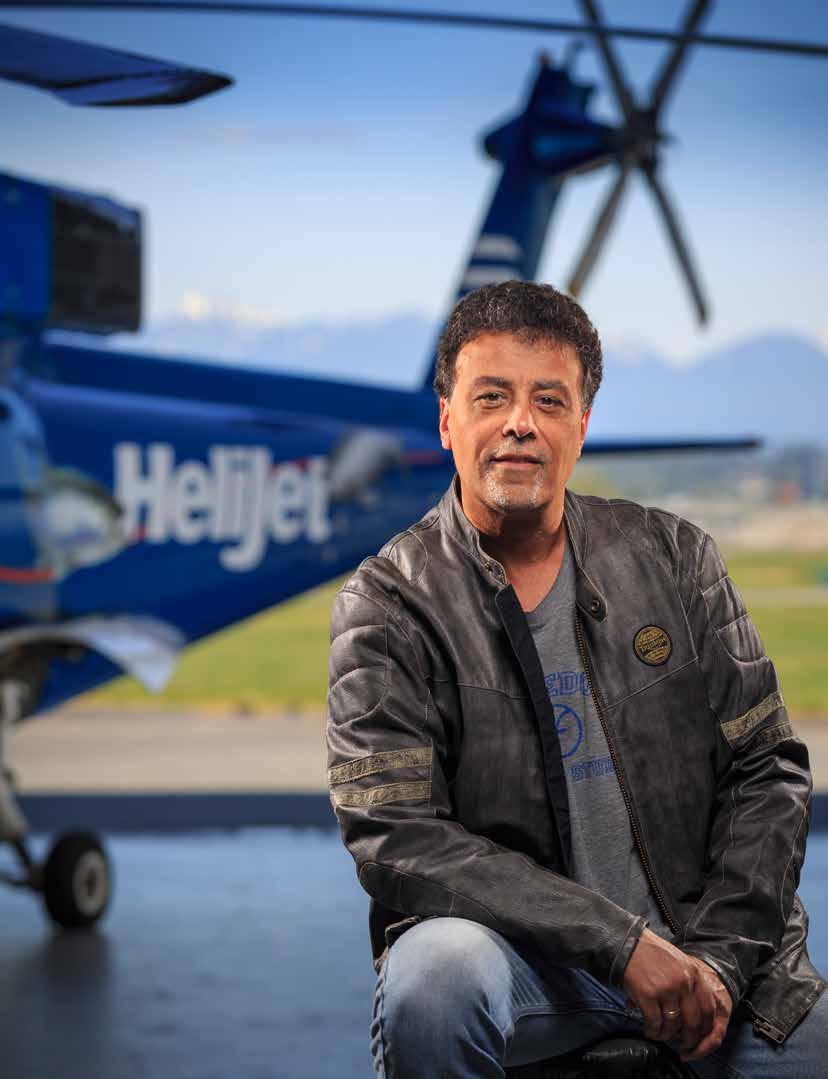

Equestrian

At Baker Rejuvenation Centre, Dr. Stephen Baker M.D. FRCSC and Rachel Varga BScN, RN Clinical Nurse Specialist, have over 20 years experience practicing aesthetic medicine. All procedures are performed by medical professionals with meticulous attention to detail and artistry, ensuring safe, conservative and natural looking results. Our authentic and honest approach supports your inner and outer well being. Call us at
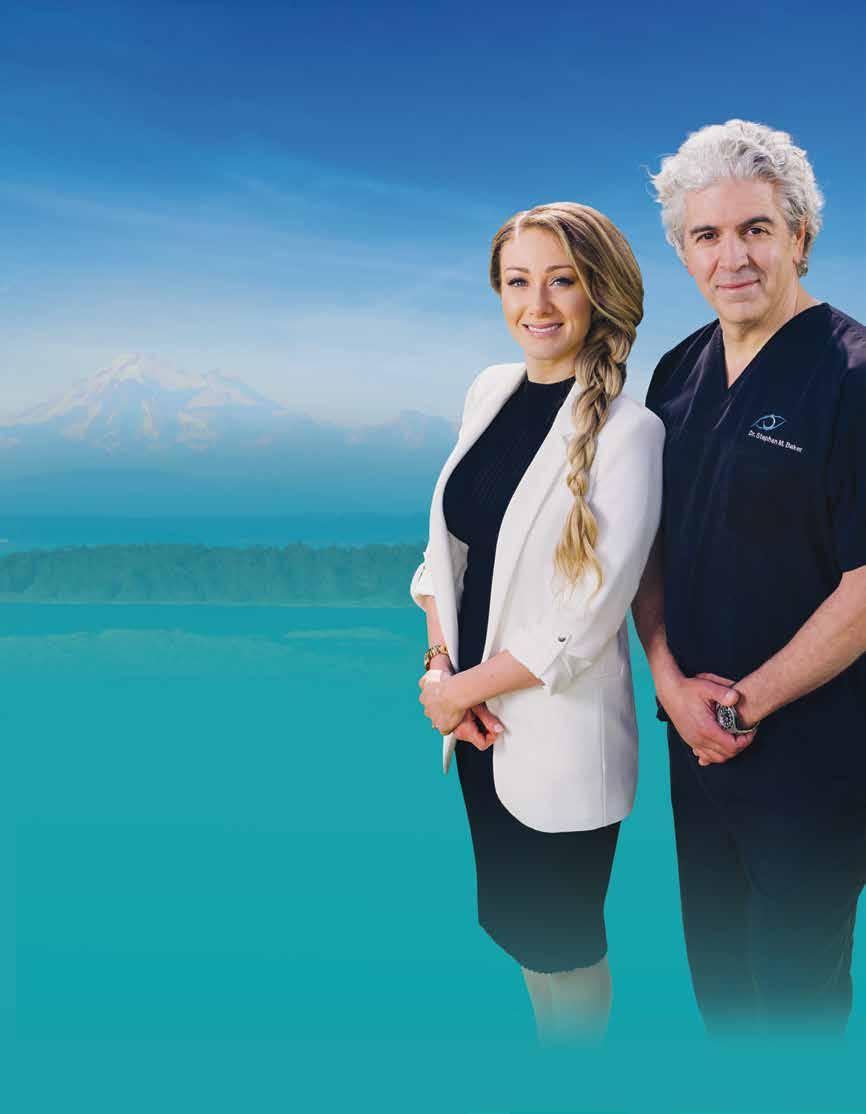



















Publisher/Editor Garth Eichel
Art Director Brent Foote
Account Manager Garth Eichel
CONTRIBUTORS
Ida Claire
Sue Dunham
Garth Eichel
Ken Glaze
Sue Kernaghan
Bob Loblaw
Emily Penn
Heath Moffatt
For information on display advertising opportunities, contact Garth Eichel at: garth@archipelagomedia.com
Published by
1248 Woodway Road
Victoria BC V9A 6Y6
250.380.3961
250.380.3962 www.archipelagomedia.com
Please send comments and suggestions to Garth Eichel, Publisher: archipelagomedia.com
In-Flight Review (IFR) is a quarterly magazine published by Archipelago Media Ltd. for Helijet International Inc. All published material is the copyright of Archipelago Media Ltd. No part of this publication, in whole or in part, may be reproduced without the written consent of the publisher. The written and photographic material published in In-Flight Review does not necessarily reflect the views of the air carrier or the publisher. Information and images produced in the magazine are believed to be accurate and truthful, but the publisher assumes no responsibility for errors.
Advertising in In-Flight Review magazine does not indicate an endorsement by Helijet International Inc. or Archipelago Media Ltd. ISSN 1916-5080
Above: The Pacific Northwest is home to some of the healthiest seaweeds in the world. Bigstock photo

Above: World Cup Equestrian Show Jumping comes to B.C. in August. Photo courtesy of Longines
Cover: Daniel Sitnam, President & CEO, Helijet, inductee to the Canada Aviation Hall of Fame. Heath Moffatt photo
BY KEN GLAZE, VERTIFLIGHT INTERNATIONAL CONSULTING

A COUPLE OF YEARS AGO I was having lunch with some aviation colleagues, and over the course of our conversation the idea came up of nominating Daniel (Danny) Sitnam, Helijet’s President and CEO, for Canada’s Aviation Hall of Fame (CAHF).
The consensus around the table was unanimous, and I volunteered for the task of officially nominating Danny.
I worked with Danny for 28 years, both as Helijet’s Chief Pilot and Operations Manager, and I knew he was an ideal candidate. But it was not until I delved into the nomination process that I came to appreciate the scope of his contributions and accomplishments.
Specifically, the CAHF nomination form asked, “of prime importance, please indicate how the nominee:
• has contributed in an exceptional way to the advancement of aviation aerospace in Canada;
• has brought great benefits to society and their communities as a whole; and
• possesses leadership that can serve as an inspiration to young Canadians to pursue careers in aviation and aerospace.”
The first requirement was a slam dunk: Danny launched Helijet on November 27, 1986, with 14 employees and one helicopter, a Bell 412 (pictured above). Over the next 30 years the company grew to become the largest helicopter airline in the world, operating a combined fleet of 20 helicopters and turbo-jet aircraft, employing 160 full- and part-time professionals.
Danny’s vision of establishing a “first class” helicopter airline between Vancouver and Victoria was remarkable on its own, but Helijet was more than just a business success story — the company fundamentally changed the way British Columbians travelled. As a helicopter airline capable of operating day and night in most weather, Helijet extends
and enhances productivity for countless privateand public-sector professionals travelling between Vancouver and Victoria, and now Nanaimo.
One could argue this alone satisfies the CAHF’s second requirement, but that would overlook many of the other “great benefits to society and their communities”.
From the outset, Danny engaged with the communities Helijet serves, implementing a “Fly Neighbourly” policy that strives to minimize disturbance and noise. What is more, he saw to it that Helijet contributed to the cities the company operates in, actively participating in the Vancouver Board of Trade, Tourism Vancouver, and the BC Aviation Council (BCAC), among others. At the same time, Helijet has long supported a variety of charities, arts groups, sports teams, and not-forprofit organizations in Vancouver, Victoria and Nanaimo. Mention must also be made of the invaluable contribution of Helijet’s air ambulance service, as well as the support the company provides to communities and businesses in Northern B.C.
Finally, on the matter of leadership and inspiration, anyone who has worked with Danny knows he is an exceptional leader, mentor and motivator. Ask any employee at Helijet and they will say he leads by example, showing tremendous respect to people at every level. Moreover, Danny is supportive of young men and women entering the aviation industry. From admin and frontline staff, to apprentice engineers and pilots, he encourages individuals to always self-improve. And such support is not limited just to Helijet employees: together with BCAC, Helijet provides an annual training bursary to help aspiring pilots and aircraft maintenance engineers pay for ongoing training and education costs.
Through Helijet, Danny has made a meaningful and lasting contribution to Canadian aviation. He has also made a difference in the lives of countless employees. For that reason, many have chosen to call Helijet home, while those who have moved on in the industry take with them the values he instilled. Paramount among these is the value of teamwork. It comes as no surprise then that Danny regards his CAHF induction as an honour to be shared by everyone at Helijet. Fair enough. But every winning team needs a captain and coach to lead the way, and that is why Danny Sitnam will be in good company in Canada’s Aviation Hall of Fame.
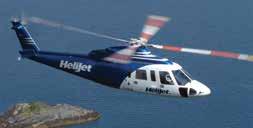


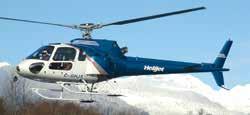
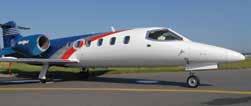









Eaglehurst is a thoughtfully-planned community of freehold detached homes, located minutes from Downtown Sidney and all of the amenities of the Peninsula. Every home is Built Green™ and has been designed and constructed to maximize space and energy savings.
At Eaglehurst, your home comes complete with premium finishings and fixtures. The fenced and landscaped yards with in-ground irrigation, air-conditioning, stainless steel appliances with natural gas range and expansive master bedrooms with radiant in-floor heating in the en-suites are just a few of the many standard finishes. Come see all that Eaglehurst Homes has to offer!
Presentation Centre
2387 Beacon Ave., Sidney, B.C.
Open Wed. - Sun. 11-5pm
Show Home
9317 Canora Rd., N. Saanich, B.C.
Open Sat. - Sun. 11-5pm



Vancouver’s signature festival, and British Columbia’s biggest music showcase, will animate the city with 300 live acts (including some free events) at some 40 venues around Vancouver.
Running concurrently from June 22 to July 2, the TD International Vancouver Jazz Festival and TD Victoria International Jazz Festival will each be hosting an eclectic mix of established and up-andcoming artists spanning all jazz genres.
For more information on performances taking place on either side of the Georgia Strait, visit jazzvictoria.ca or coastaljazz.ca

The spectacular energy of the Honda Celebration of Light competition returns for its 27th year on the shores of English Bay with a thrilling international line-up for this year’s festival featuring Japan on July 29, the United Kingdom on August 2, and home team Canada on August 5th.
The Vancouver Fireworks Festival Society (VFFS) is the not-for-profit society overseeing the Celebration of Light Fireworks Festival, the largest offshore fireworks competition in the world. | hondacelebrationoflight.com
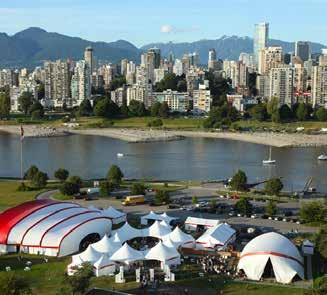
What better way to enjoy Shakespeare than with sand between your toes? Celebrating its 28th Season in 2017, Bard on the Beach is Western Canada’s largest not-for-profit, professional Shakespeare Festival. As always, the Festival will be presented on the waterfront in Vancouver’s Vanier Park, showcasing Shakespeare plays, related dramas, and several special events in two performance tents from June through September. This year’s Festival includes four different and dynamic plays, including Much ado About Nothing, The Winter’s Tale, Merchant of Venice, Shylock, and The Two Gentlemen of Verona. Additionally, the Festival is hosting a variety of special events, from opera to orchestras, to talks and tastings, and much more. | bardonthebeach.org


The Vancouver Folk Music Festival celebrates its 40th season this summer, July 13 to 16, at Jericho Beach park. This year’s Festival features a roster of global folk and roots music from 20 different countries, performing on seven summer beachfront stages. Over 60 acts are slated to perform, including Billy Bragg and Joe Henry, Grammy-winning songstress Shawn Colvin, Rhiannon Giddens from the Carolina Chocolate Drops, and many more Sixty music acts from 20 countries, 10 states and nine provinces are coming to play for you – and to help celebrate the VFMF’s big 4-0. | thefestival.bc.ca
Hailed as “Canada’s most scenic half-marathon”, the Scotiabank Vancouver Half Marathon & 5K invites some 6,000 participants to run and raise money for charity. Last year’s Scotiabank Charity Challenge participants raised over $8 million dollars for over 550 charities across Canada. | canadarunningseries.com






Join the Songhees and Esquimalt Nations in celebrating the Aboriginal Cultural Festival over the National Aboriginal Day weekend, June 16 to 18. Taking place in the plaza at the Royal BC Museum, the Festival will showcase performances from the two local Host Nations, followed by shows from aboriginal performers from across B.C. In addition to the main stage performances, the Festival will feature an authentic indigenous arts marketplace, and an outdoor dining area where visitors can sample and purchase a wide variety of traditional and modern fare. | aboriginalbc.com
Starting on Wednesday, June 21, at Ship’s Point in Victoria’s Inner Harbour and culminating on Saturday, July 1, on the Legislature Lawn, Spirit of 150 Victoria, City of Victoria, and the Canada’s 150th Anniversary of Confederation present 11 days of multicultural artistry, events and live music, culminating in a massive firework display on Canada Day. | spirit150victoria.ca
The TD Victoria International JazzFest, June 23 to July 2, is a 10-day music festival featuring the jazz, blues and world music of local, Canadian, and internationally acclaimed musicians. The “grandfather” of music festivals serving audiences in Vancouver and Gulf Islands region, TD JazzFest is British Columbia’s biggest music showcase, animating the city with hundreds of live acts — some of them free! | jazzvictoria.ca

Victoria Pride Week, July 3 to 7, invites those who are — or think they may be — lesbian, gay, bisexual, transgender, two-spirited, intersex, and all friends and allies to celebrate learning and empowerment throughout the week-long festival. The annual parade and festival will be held on Sunday, July 9. | victoriapridesociety.org
St. Ann’s Academy goes to the dogs on August 12 & 13 as it plays host to Pet-A-Palooza, the West Coast’s largest outdoor pet festival. Animals and animal-lovers alike will thrill to fly ball shows, agility demos, photo lounges and up to 85 petrelated exhibitors. Be sure not to miss the “Running of the Bulls” — a hilarious series of French and English bull dogs races. | petapaloozawest.com


On Sunday, August 6, tens of thousands of people will descend on Victoria’s Inner Harbour for the 28th annual Victoria Symphony Splash. The largest annual outdoor symphony event in Canada, Symphony Splash includes original and classic works, performed by Victoria Symphony on a barge moored in the Inner Harbour. Spread a blanket on the Legislature lawn, or take to the water by boat for an ideal view. As always, the concert concludes with Tchaikovsky’s 1812 Overture, cannons and fireworks. | victoriasymphony.ca

A Vancouver Island festival tradition for 30 years, Victoria Fringe Theatre Festival takes over downtown Victoria for a 12-day celebration of live performances from around the world, featuring an eclectic mixture of spoken word, drama, musicals, dance, comedy, magic, theatre for young audiences and more. This year’s Festival, August 23 to September 3, features returning favourites, local showbiz heroes, and performers from across Canada and around the world. | victoriafringe.com
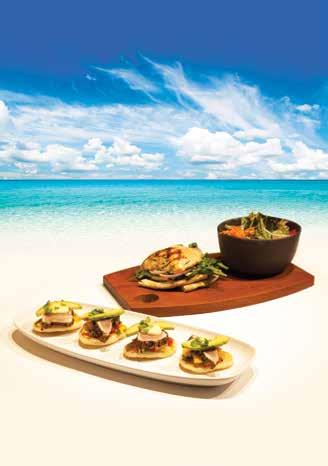

The Nanaimo Marine Festival is an annual event jammed-packed with seaside events, exhibitions and venues throughout the city, capped off by Bathtub Weekend, July 21 to 23. Highlights include a pancake breakfast, live performances, festival food fare, numerous children’s events and, of course, the annual Great International World Championship Bathtub Race, an epic ocean racing tradition started in 1967. | bathtubbing.com

Enjoy a fun-filled day celebrating the diversity of cultures in Nanaimo at the Nanaimo Multicultural Festival on Saturday, June 24, in the Old City Quarter. This popular festival offers a variety of performing groups, live music, food vendors, exhibitors, demonstrations, and hands on activities for the entire family. Admission is free. oldcityquarter.com
Nanaimo Marine Festival
July 1st to July 31st, 2017

It’s going to get nitty and gritty at Beban Park in Nanaimo on June 24 when Party in the Park 2017 rolls into town for the city’s biggest outdoor concert. This year’s show features four-time Canadian Country Music Awards winner Aaron Pritchett alongside Lion Bear Fox, and many other Islandgrown country entertainers. | pieevents.ca
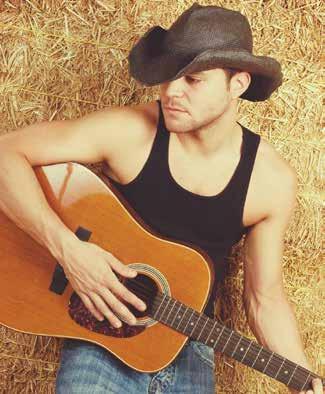

Get wet and wild at the 14th Annual Nanaimo Dragon Boat Festival, July 7 to 9, where dragon boat teams from all over the Pacific Northwest will compete for gold and good times at Maffeo Sutton Park. nanaimodragonboat.com
If the humble ukelele is a musical instrument close to your heart you won’t want to miss the 2017 Nanaimo Ukulele Festival, July 15 & 16, taking place at Nanaimo Neighbourhood Church on Rutherford Road. Highlights of this year’s Festival are performances by the worldrenowned, James Hill and Anne Janelle, as well as beginner and intermediate workshops. Attendees are invited to bring their own ukes and sing along. | nanaimoukulelefestival.ca

Maffeo Sutton Park in Nanaimo is the place to be August 24 to 27 for the Summertime Blues Festival. Your spirits are sure to lift after three days in the sun soaking up the sultry stylings of professional blues musicians. bluesmuscifestival.com
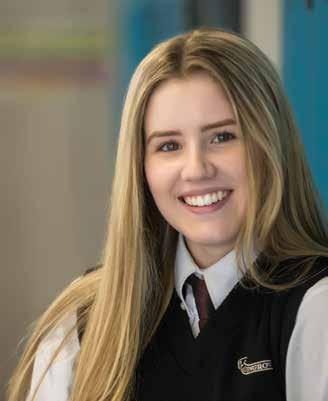



Summer calls for cold, refreshing and tasty treats, but healthy choices often seem few and far between. No longer: Victoria-based DeeBee’s SpecialTEA Foods has introduced DeeBee’s Organic TeaPops, the world’s first organic tea-based frozen novelty. Developed by research scientist and entrepreneur Dr. Dionne Laslo-Baker, DeeBee’s TeaPops are made from simple, pure ingredients, naturally sweetened with organic super-fruits and small amounts of organic unrefined cane sugar or coconut flower blossom nectar. Tea infusions include green, white, black, hibiscus, mint and rooibos, all of which pack an antioxidant punch. Moreover, DeeBee’s TeaPops are certified organic, Fair Trade, Non-GMO, Vegan, Kosher Parve, and are naturally free of gluten and soy.
They’re delicious, too! Flavours include Pink Lemonade, Tropical Mango, Berries & Cherries, Strawberry Harvest, Rasberry Citrus, Toasted Coconut, Chocolate Fudge, and Southern Iced Tea. Look for them this summer in your local grocery store! | deebeesorganics.com
Just in time for the patio-sipping season, Victoria Distillers has launched its new Empress 1908 Gin. Developed in concert with mixologists at the Fairmont Empress Hotel in Victoria, this premium gin was inspired by the famous 1908 cocktail — named for the year the hotel opened.

Made from seven natural ingredients, hand-crafted in small batch copper-pot stills, Empress 1908 Gin has remarkable nuance and depth, but what makes it especially distinct is butterfly pea blossom, a South Asian botanical that imparts a funky indigo blue hue to the spirit, which morphs into rose petal pink when mixed with tonic.
“We are extremely excited for everyone to taste our new gin, and become enthralled, not only with the colour, but also with the clean and polished flavors of the botanicals,” say Peter Hunt, President, Victoria Distillers. | www.empress1908gin.com
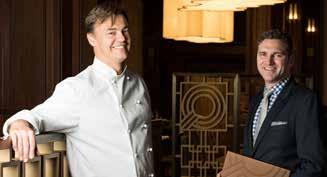
Fairmont Empress in Victoria recently appointed Juan Bochenski (left) as the hotel’s Executive Restaurant Chef, tasking him with developing a new menu for Q at the Empress with restaurant General Manager Albert E. Kirby (right).
A native of Argentina, Chef Bochenski’s culinary career has spanned many continents, including tenures at some of the most esteemed and luxurious restaurants and resorts in the world. He marries his European culinary training with his Latin American roots, bringing an innovative approach to Q at the Empress where his cuisine will take a global approach to showcasing local ingredients from the Pacific Northwest.
“Q at the Empress celebrates local artisans, farmers and fisherman,” says Bochenski. “My vision is to create menus that reflect the seasonality of the peninsula in a simple way, where local ingredients are not overworked, and speak for themselves.” | qattheempress.com
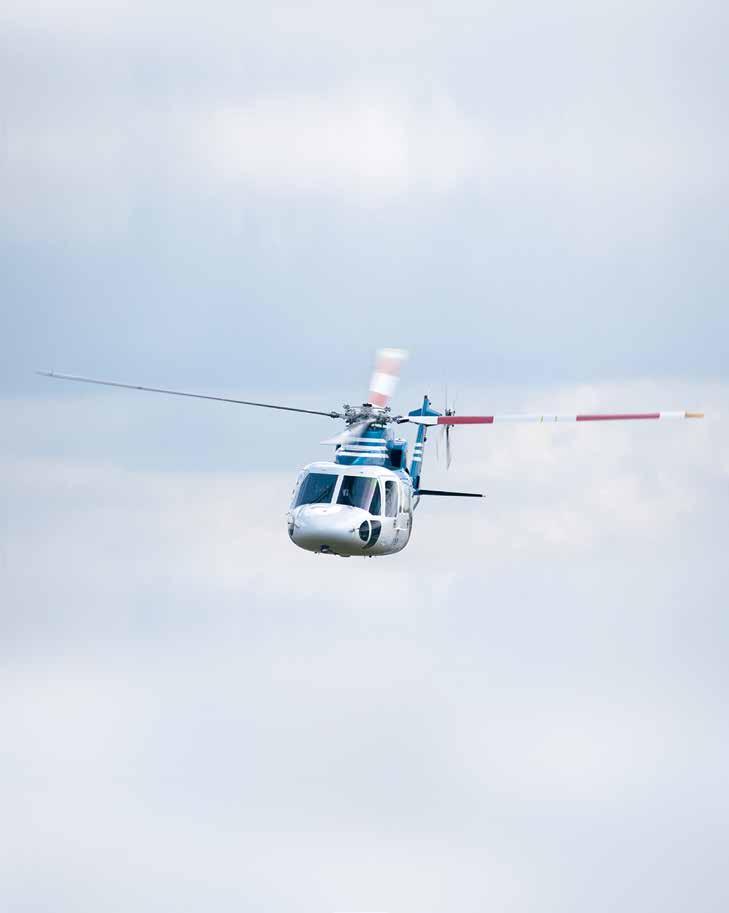
BY KEN GLAZE HELIJET CREW
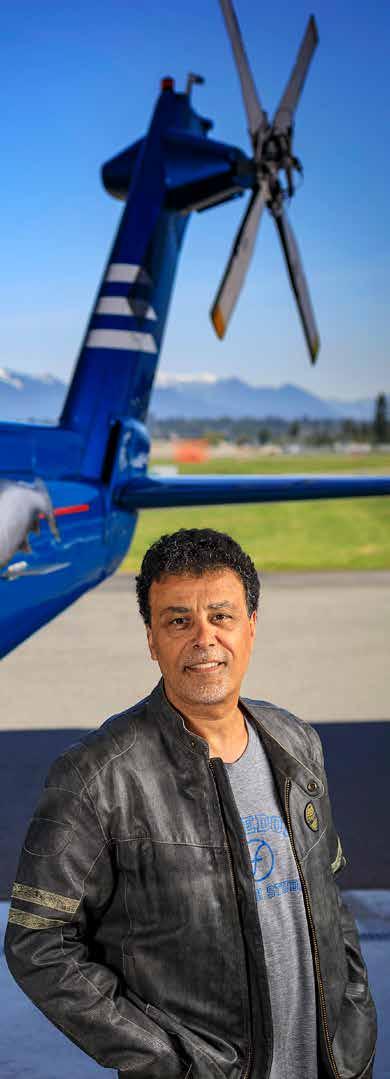
DANIEL SITNAM, HELIJET PRESIDENT & CEO, AND CANADA AVIATION HALL OF FAME INDUCTEE
WHAT MAKES FOR A GREAT LEADER? Much thought and debate has been expended through the ages trying to answer that question. Politicians, generals, coaches and corporate executives all pay particular attention because effective leadership is so crucial to success.
Some might say leaders are born. Others may argue leadership is something that can be instilled. Personally, I think it’s a bit of both.
As a 21-year-old U.S. Army helicopter pilot in Vietnam I learned hard lessons in the difference between good and bad leadership. I became pretty adept at recognizing both in the army, and in civilian life as a commercial helicopter pilot.
After getting out of the service, I moved to Canada in the early 1970s in search of work. In the years that followed I flew for a variety of helicopter companies in Alberta and B.C., working for some great bosses, and some not so great. The best I ever worked for was Daniel (Danny) Sitnam, President and CEO, Helijet.
Danny hired me as Helijet’s Chief Pilot and Operations Manager in June 1986. I was impressed by him at our first meeting, but the more I got to know him, the more I wondered if he was too good to be true. (Jaded by my tour of duty, I’m naturally suspicious of people until they prove otherwise.) My skepticism lasted for a year or so before I realized Danny was the real deal. I ended up spending the next 28 years of my life working with the man.
Danny was born in London, England, on May, 23, 1956, the middle of three children.
His father, Elmo, was from Trinidad and his mother, Rosanna, was from Northern Italy. Both parents had a profound influence.
Elmo was trained as a civil engineer, and his career took the family to Canada in 1963, first to Montreal, then Sarnia, Ontario, before eventually boarding a train for Vancouver in March 1973.
Sixteen-year-old Danny was not at all happy about moving West that year. He ranted and raved on the train for days about leaving his friends behind,
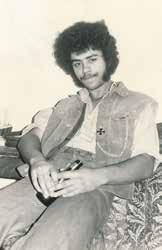
Danny Sitnam, teenage bad boy.
loudly declaring his intention to return East. Nevertheless, Danny fell in love with Vancouver and within a month he was settled in at Windsor Secondary School in North Vancouver. During this time he bonded with his dad, spending many happy hours working together, tinkering and building things in the basement of their North Vancouver home.
“Dad was an engineer by training, but I always remember him as an inventor,” Danny recalls. “He was always looking at how to improve things for people’s lives, especially the poor and underprivileged. He was a bit of a dreamer, but I took a page from him — he was always enthusiastic about life.”
Like his dad, Danny enjoyed working with his hands, and so he decided to become a machinist. But fate had other plans: one day while working as a fry cook at the Owl and the Oarsman Restaurant on Burnaby Mountain, a Bell 47 helicopter came in to land on the field behind the restaurant. The pilot got out and asked where the people were for his sightseeing tour. When they couldn’t be found he asked Danny, “Wanna go for a ride? It’s paid for.”
After 30 minutes in the air the hook was set.
Danny abandoned the idea of becoming a machinist and set about learning to fly. But in a sign of things to come, he embarked on his aviation career in an unorthodox way: in 1976 a helicopter instructor in Pitt Meadows ran a newspaper ad soliciting six students willing to invest in the purchase of a Hiller 21E helicopter, which he would teach them to fly. Sitnam admired the novel business model and scraped together $12,000 to buy in. He obtained his Commercial Helicopter Licence in May the following year, landing his first job shortly afterwards in Mayo, Yukon.



Danny flew light and medium utility helicopters in the Yukon, Alberta and Northern B.C. for the next five years, logging some 5,000 hours. But at heart












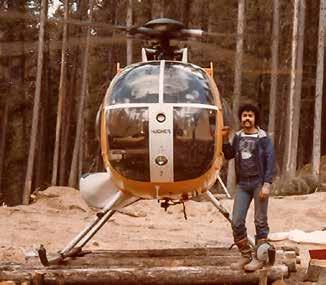
he was a restless entrepreneur. He returned to the Lower Mainland in 1982 to try his hand at running his own flight school and in the course of events he became friends and partners with a Vancouver businessman, Alistair MacLennan. Together they formed W.M. Aviation and began offering charter helicopter services with an Aerospatiale Gazelle from a rooftop heliport in North Vancouver.
“I came up with the brilliant idea that we could serve the corporate charter market in Vancouver,” says Danny. “We proceeded to lose lots of money.”
Tired of throwing good money after bad, Danny came up with a better idea — a scheduled helicopter service between Vancouver and Victoria serving executives in business and government.
“When Danny first approached me with the exotic idea of investing in a helicopter airline I should have turned on my heel and walked away,” recalls Alistair MacLennan. “Thing is, I liked what I saw in Danny: he’s a forceful personality and a quick study who balances intelligence with a clear appreciation for those he works with. And he has optimism and determination to spare.
“These qualities are attractive to investors. Sometimes too much so. We took a financial thrashing in Helijet’s first few years of operation, and more than once I seriously considered cutting my losses. Luckily for Danny, I hate losing.”
With the support of another partner, Stewart Vorberg, Danny recruited several talented people who shared his belief that Helijet could provide better customer service and operating standards than what was available.
At the time, the Vancouver-Victoria corridor was already being served by floatplanes. But these

aircraft can only fly during daylight hours, and in Visual Flight Rules (VFR) weather conditions. The busiest time of year for business and government commuters is during autumn, winter and spring when short days and inclement weather can restrict VFR flight operations, often permitting only Instrument Flight Rules (IFR) flights.
Danny was convinced the market would respond positively to a new carrier flying multi-engine, multi-crew, IFR-certified helicopters that could extend the business day by being able to fly in darkness and most weather conditions.
That concept was put to the test on November 27, 1986, when Helijet launched its first passenger flight. I was at the controls that day and we flew empty from Vancouver to Victoria on the first leg, returning with a single paying passenger. It was not an auspicious start, but we persevered, despite criticism from competitors and media pundits who smugly predicted our demise within months.
In order to succeed, Danny knew Helijet and its employees had to go above and beyond, providing a level of reliability and customer service well above normal expectations. Achieving those lofty aspirations required a level of leadership and teamwork that went above and beyond, too.



Aviation is a highly competitive industry with slim profit margins. More companies fail than succeed. For more than 30 years Danny has steered Helijet through market challenges and weathered economic storms that would have sunk many other companies. He succeeded in large part because he had faith in himself and the program.
“In business you have to believe in yourself and stare the devil in the face sometimes,” he once told me. “You’re going to make mistakes and be criticized, but no matter how dark things seem, you can’t be afraid of failure. Just stay focussed on your end goal.”
Danny knew in his heart, and his head, that we could succeed by doing better in terms of sales, marketing, service and operational standards.
Before joining Helijet, I’d flown for bosses who were great with people, but not so good with finances. I had also worked for some who were exceptional at managing dollars, but not employees. Danny is one of those rare individuals who excels at both.
What is more, he knows it is important to invest in things that may not show up on the bottom line.






































































































DANNY AND LAURA SITNAM have had a thing for each other ever since they had adjacent lockers in high school. After 25 years of marriage, Danny credits much of his success to Laura’s support and patience: “Laura is such a unique and beautiful person, and she’s been so supportive and patient with my schedule. She knows I’m a workaholic and Helijet is my life. Not a lot of people would stick by their other half the way she has. I admire and love her for that.”
Together, Danny and Laura have two children, Corra-Rose (27) and Owen (24). Corra-Rose works as a donations and events planner organizer with Power to Be, a non-profit organization helping people with disabilities access nature, while Owen is a commercial helicopter pilot currently working in Slave Lake, Alberta.

The Nanaimo Port Authority develops partnerships to service central Vancouver Island. So when we heard that Helijet’s President & CEO Daniel Sitnam was being inducted into Canada’s Aviation Hall of Fame, we weren’t surprised. Helijet is a great partner, led by great people, with great connections, for you.

For example, helicopters are inherently noisy machines and when we started flight operations there was no shortage of people in Victoria, Vancouver, and the Gulf Islands in between, who would just as soon see us gone. In consideration of residents, and to minimize irritation, we adopted a “fly neighbourly” policy that sees scheduled flights operate at higher altitudes, and along more than a dozen different flight routes on any given day. Such measures add significant cost, but Danny recognized the dollars spent were a wise investment in the company’s future. And besides, as he’d often say, “It’s the right thing to do.”
The same can be said for the multitude of charitable organizations arts groups, sports teams, and not-for-profit organizations Helijet supports in the communities it serves.
Danny’s business acumen is matched only by his ability to motivate and inspire people.
“The dynamics of people can make companies excel or go bankrupt,” says Danny. “Many of the companies I used to look up to failed, while several I didn’t think would make it became success stories. The common denominator in every case is human relationships — having everyone focussed on the same goal.”
Of course, getting people all on the same page is no mean feat. What Danny has always appreciated is that everyone, no matter what their job, wants to be treated with respect and feel like they are making a meaningful contribution. Unfortunately, too many bosses give little thought to their underlings, preferring a top-down approach to decision making. Conversely, a leader who remembers your name, takes time to get to know you, and listen to your concerns gets different results.
“I don’t wear my title,” says Danny. “I have to come across at everybody’s level, and be sincere about it. It doesn’t do any good to try and solve people’s problems for them because I think I know best.
“What I like most about my job is that it gives me the freedom to mentor and help people. There are so many in our organization with great ideas; my job is to help them bring those ideas to the surface, and not be afraid to speak up.”
Leading by example, Danny never hesitates to jump in and get his hands dirty assisting with any task that needs doing. Moreover, he extends
genuine respect to everyone in the organization, regardless of whether they are a senior manager or a new-hire sweeping the hangar floor. That culture of respect and appreciation permeates the company, and explains why so many employees have devoted much of their professional lives to Helijet. When I started with Helijet in 1986 we had one helicopter and 14 employees. On Danny’s watch, the company grew to become the largest helicopter airline in the world, while also branching into a variety of fixed- and rotary-wing markets, including air ambulance, film, tourism, corporate, and natural resources, as well as heliport operations through a subsidiary company, Pacific Heliport Services. Today the company employs some 160 professionals and maintains a combined fleet of 20 helicopters and turbo-jet aircraft providing scheduled, charter and air ambulance services throughout B.C., North America, and beyond. In recognition of his considerable achievements, Danny was chosen for induction into the Canada Aviation Hall of Fame (CAHF) this year, joining the venerable ranks of this country’s aviation legends. This is no small thing, but, true to character, Danny is humble in acceptance, regarding the honour as

shared recognition for the efforts of everyone who devoted themselves to realizing Helijet’s success. Danny has much to be proud of and recognized for, but perhaps the greatest honour of all is the admiration and trust he has earned from Helijet’s dedicated employees.

Since 1987, donations from the recreational fishing sector have helped the Pacific Salmon Foundation invest over $53 million in wild salmon projects. Thank you!
What you can do for wild salmon:
•Make a tax-receiptable donation at psf.ca
•Attend or sponsor one of our events: psf.ca/events
•Host a derby or event with the Foundation as a beneficiary
•Subscribe to our e-newsletter at psf.ca
Check out psf.ca or contact 604.664.7664 or salmon@psf.ca.

WORLD CLASS EQUESTRIAN SHOW JUMPING AT THUNDERBIRD SHOW PARK
AT SOME POINT, most everyone has seen equestrian show jumping on TV, most likely while channel-surfing during the Summer Olympics. But TV doesn’t do the sport justice. To truly appreciate a world class competition one needs to see it first-hand. Only at ringside can spectators see and hear the power of 1,500-lb animals — paired with a rider who has trained their entire life — leap over a series of daunting obstacles for the fastest,
clear time. It is a remarkable test of skill and technique — for both animal and rider.
British Columbians wanting to experience the spectacle for themselves will have a rare opportunity to get up-close-and-personal this summer at the Longines FEI World Cup™ Jumping Series Qualifier at Thunderbird Show Park in Langley in August, the first Longines Series event in North America for the 2017-18 season.

riding is not a test of a rider’s stength; it is a test of a rider’s skill, combined with the horse’s strength, power, stamina, and accuracy
The Qualifier at Thunderbird Show Park will be a two-week competition where top international riders will compete for qualifying points on August 27. Riders and horses from all over the world will be there representing Canada, USA, Mexico, France, Brazil, Egypt, and many more.
You don’t have to be a horse lover to enjoy show jumping, but a bit of background on the sport goes a long way towards enhancing one’s appreciation. The first thing to note is that show jumping competitions are unique in professional sport. Men and women compete as equals. (This is true of all equestrian sport — dressage, eventing, and reining.) That’s because riding is not a test of a rider’s strength; it is a test of a rider’s skill, combined with the horse’s strength, power, stamina, and accuracy. It is also unique in that it is one of the few sports where competitors can range in age difference by as much as 50 years. It doesn’t matter if a rider is 20 or 70; it’s all about ability.
Then there are those curious obstacle courses. The goal during any equestrian show jumping competition is to achieve a clear round. This is when rider and horse have finished the course within a set time allowed without knocking down any of the jumps.
The jumps vary in size, ranging from 1.5 to 1.6 metres in height. (As an amateur rider, my horse and I limit our jumps to obstacles the size of a Smart Car; the courses World Cup riders compete on have obstacles that are closer in size to an SUV.) It goes without saying that equestrian show jumping is not for the faint of heart!
Most courses consist of 12 to 16 jumps, all set

at various distances apart. This is the mathematical part of show jumping many people are not aware of. There are set distances between the jumps, varying from one obstacle to the next. (Think running hurdles, but all set at different distances.) The rider’s job is to is to control the horse’s stride to fit within those set distances. Every horse’s stride length is different, but generally riders aim for a 12-foot stride. This may change if a horse is going fast around a course, or if the

horse is big, in which case the rider might be on a 16-foot stride. Horse and rider need to continuously adapt as they go through the course. For example, clearing two jumps that are only two strides apart requires the rider to shorten the horse’s stride.
Understanding distance is one of the most important aspects of equestrian show jumping. If spectators arrive early before an event they will likely see riders walking the course on foot,


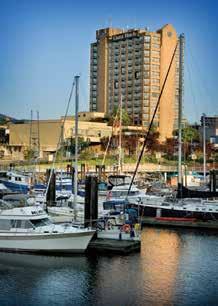
counting the number of strides between jumps. As a general rule-of-thumb, riders count four human strides for every one stride a horse takes. Riders are intensely focused while walking a course, counting under their breath, and making a mental map while carefully planning how they will guide their horse through it safely and as fast as possible. Judging distance wrong can lead to disaster. A horse can knock down a jump, crash through it, or stop short — sending the rider over the jump on their own.
Teamwork between horse and rider is critical, and it is this relationship between humans and animals that makes the sport unique and fascinating to watch.
Competing as a pair requires horse and rider to communicate through leg and hand signals as they proceed through the course and set up for jumps. It takes years of training and practicing together under the guidance of an experienced coach.
As with any sport, preparation and ability are key to victory, but chance plays a part, too. All it takes




is one wide turn, one extra stride, or a gentle tap on the pole on one jump, and you are out of the money.
Professional riders who finish on the podium are handsomely rewarded. The Longines FEI World Cup™ Jumping Series Qualifier at Thunderbird Show Park this summer is the biggest sponsored class of the year in B.C., with $120,000 in prize money. The top riders attending compete all over the world, and with 16 events spanning the 2017-18 season, many stand to do well. In fact, several have earned millions since the Series began in 2006.
Equestrian show jumping is often regarded as a sport for the wealthy. Certainly, up-and-coming riders like Jessica Springsteen and Jennifer Gates aren’t short on opportunity, but success hinges on the same principles as any sport — natural ability, training, coaching and dedication. Those who rise to the top are incredibly talented athletes.
Behind the scenes, equestrian show jumping is also a community made up of people from all walks of life. Some are horse trainers, barn owners, and grooms (people who take care of the horses),



as well as people involved in related industries such as tack stores and saddle makers.
Likewise, spectators come from a variety of backgrounds, and each enjoys equestrian show jumping in their own way. Some prefer the authenticity of tailgating in blue jeans at the side of a dusty arena, while others might dress up in hats, heels and summer dresses for an afternoon of classy hobnobbing in the VIP area. Regardless of prefer-
ence, spectators can all look forward to sharing in the thrill of watching the best riders and horses in the world compete at the top of their game this summer at Thunderbird Show Park.
For information on attending the Longines FEI World Cup™ Jumping Series Qualifier at Thunderbird Show Park on August 27, please visit www.tbird.ca or email Emily Penn emily@tbird.ca.
Bill Ethier, President/Managing Broker Royal LePage Coast Capital Realty
To grow our management team, we had to find just the right leader. And to find that person, we relied on Chemistry Consulting. The team at Chemistry helped fill the role, delivering us into the next chapter of our growth and success. We could not have done it without them.
Contact us today.
T 250.382.3303 E info@chemistryconsulting.ca chemistryconsulting.ca
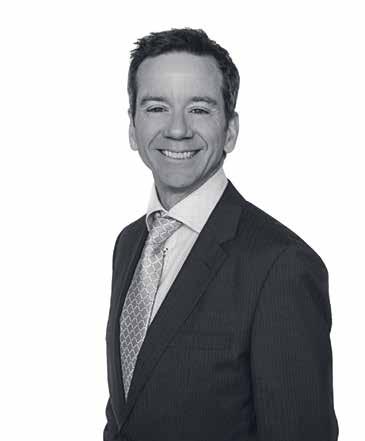
BY IDA CLAIRE

CANADIANS LOVE THEIR BIG HOMES. In fact, only Americans and Australians outdo us when it comes to square-footage. But sooner or later a big house can be a drag on income and lifestyle. Upkeep, utilities and property taxes become a steady drumbeat, driving many homeowners to consider downsizing to a smaller home, such as a townhouse or condo apartment. And with the West Coast housing market on a sustained roll, many believe it’s time to cash out of their detached homes before the music stops.
Who can argue? After all, the benchmark price for a detached property in Greater Vancouver this past April was pegged at $1,516,500. A similar home in Greater Victoria seems like a relative bargain at $883,853. For now, homeowners in either city can sell and downsize to a townhouse or condo for about half the price of their detached home, and if they move to a smaller, more affordable community they can stretch their winnings even further.
The prospect of unlocking equity tied up in a house is surely tempting. But money is not the only motivation. Downsizing also offers the promise of less yardwork and household maintenance, and an opportunity to purge decades of accumulated clutter. The allure of living simply with less stress and more free time and money resonates.
Notwithstanding the upsides, the dream of downsizing comes with its own challenges. As often as not, people trade one set of problems for another.
The first challenge facing downsizers is what to do with surplus revenue generated from the sale of their home.
This might seem like a good problem to have, but even $1 million in profit won’t go as far as one might think, especially if one doesn’t have a pension or significant savings set aside.
Those who regard their home as their retirement nest egg should consider that they might outlive their savings. Thanks to advances in medicine and technology, people are living longer than ever before, and British Columbians have the highest life
“People cashing out of the real estate market need to focus on high quality investments.”
— Peter Schenk, Portfolio Manager
at The Schenk Group, Scotia
Wealth Management
expectancy in Canada. Given that many people now live well into their eighties and nineties, proceeds from the sale of a house need to be re-invested wisely.
“People cashing out of the real estate market need to focus on high quality investments, and diversify their asset classes more so they’re not overly exposed to market shocks,” says Peter Schenk, Portfolio Manager at The Schenk Group, Scotia Wealth Management, in Victoria. “They need to find a way to make money while managing risk. That’s harder nowadays than in the ’90s, but with

the right investment process and some hard work, you can still find opportunity for good returns with low-to-medium risk investments. With a realistic plan, you can meet your goals with a risk level you can manage.”
Schenk’s advice to downsizers is that they not coast on the proceeds of a home sale. He encourages them to become active and informed investors, developing a comprehensive and diverse income investment strategy with their financial advisor that goes beyond simply “buy-and-hold”. Specifically, he invites prospective investors to do their research, and ask their financial advisor hard questions about past performance, risk management process, and how they weathered significant changes in the markets.
“Every financial advisor has a story, and each story will sound good,” says Schenk. “In the end, the only things that matter are specifics on how are they making and protecting their clients’ money.”



Peter Schenk Portfolio Manager
theschenkgroup@scotiawealth.com

Human nature is such that people generally overestimate the positive, while underestimating the negative. Downsizing to a smaller home is no exception, and sellers need to have realistic expectations about what their house is worth.
Prospective sellers often believe significant renovations and improvements to their homes will enhance market value, and while that might hold true in cities like Edmonton or Winnipeg, the West Coast real estate market is such that upgrades and the like may add no value to a property. Particularly so in Vancouver.
“People who have been out of the market a long time are often surprised to learn their homes are not worth squat,” says Wes McMillan, a real estate lawyer at Vancouver-based law firm Hakemi & Ridgedale LLP. “Perfectly good houses are being torn down because land values are so high; buyers willing to pay millions are going to put whatever they want on it. That can be frustrating for sellers when they learn that big reno they did five years
ago adds no value.” What is more, he says, “Your house may be unsaleable unless you incur costs to fix the property as a condition of sale. Something like a buried oil tank could cost thousands and thousands of dollars to clean up.”
Then there is the realtor’s fee. While housing prices have soared in Vancouver and Victoria over the past 20 years, commission structures have remained much the same, with listing agents generally charging 7.5% on the first $100,000 and between 2% and 3% on the balance, plus 5% GST. (The listing agent normally shares close to 50% of their fee with the buyer’s agent.) There are exceptions, of course, but if one assumes a fee of 7% on the first $100,000 and 2.5% on the balance of the purchase price, a listing agent who sold a home in Vancouver in April for $1,516,500 would have charged a fee of $42,413, plus $2,121 GST. A listing realtor who sold a similar home in Victoria in the same month for $883,853 would have charged a fee of $26,596, plus $1,330 GST.
Once the realtor takes their cut there are other closing costs to consider, such as legal fees to transfer title, as well as moving and storage costs. Mortgage penalties may also be applicable, too.
While homeowners in Vancouver and Victoria looking to downsize are currently enjoying a seller’s market, it naturally follows they are at a disadvantage if they seek to buy in either city.
That’s because prices for townhouses and condo apartments have been rising fast in recent years as demand continues to outstrip supply. In Greater Vancouver the benchmark price of a townhouse in April ($701,800) increased in value by 50% over the last three years, while the benchmark price for a condo ($554,100) rose by 47% in the same period. Price increases in Victoria have been somewhat tamer. As of April, the benchmark price of a townhouse in Victoria ($520,600) had increased in value by 21% since April 2014, while the benchmark price for a condo ($394,700) rose by 30%.
Of course, these are only benchmark prices, and not all homes are created equal. Moreover, with demand for townhouses and condos surging in both cities, downsizers may have to spend significantly more than they expect to get what they want. Accordingly, many are choosing to downsize to more affordable communities in B.C.
Vancouver Island is a popular choice for many looking beyond Victoria. The real estate market is


TRG turns your vision of social responsibility into dignified group benefits for your employees.

ROBERT J. TAYLOR Principal, TRG Group Benefits
Direct: 604.714.4410 email: rtaylor@trggroup.com www.trggroup.com

Your friendly, environmentally conscious and locally owned car dealer specializing in plug-in Electric Vehicles.
Sustainable choices make sense when they’re complimentary to your lifestyle. 100% Electric vehicles allow you freedom from tailpipe emissions, gas stations, and ridiculous costs associated with driving and maintaining an internal combustion vehicle. We also carry Electric Bicycles, Electric Vehicle Charging Stations for both residential and commercial use and sell electronics and accessories to improve your EV ownership experience.
WE ARE CANADA’S ONLY ALL ELECTRIC VEHICLE DEALER

surging here, too, but prices are much more affordable than in Victoria or Vancouver. For example, the benchmark price of a townhouse in the desirable community of Parksville-Qualicum was $392,200 in April, while just down the road in Nanaimo it was $289,500. A benchmark condo in either town could be had even cheaper that month at $301,900 and $262,200, respectively.
But no matter where downsizers choose to buy, there is no escaping the B.C. Government’s property transfer tax (PTT).
The PTT rate was set in 1987 and, despite massive increases in property values over three decades, the provincial government has not lowered the rate accordingly. In the 2015-16 fiscal year alone the government raked in $1.53 billion in property transfer tax — a whopping increase of 43.9% over the previous year.
Currently, the PTT charges homebuyers 1% on the first 200,000; 2% on the portion of the fair market value greater than $200,000 and up to and including $2,000,000; and 3% on the portion of the fair market value greater than $2,000,000. In addition, there is the new 15% PTT on foreign buyers in Metro Vancouver that was introduced in July 2016.
Regardless of selling price and PTT, prospective homebuyers need to budget for the cost of a home inspection if they want peace of mind, and recourse should it ever become necessary.
“The obligations of a seller to say anything about their property are pretty limited,” says McMillan. “Buyers are often shocked to learn how little the seller is legally required to reveal about deficiencies and defects; even those that could render the property dangerous or uninhabitable.”
For that reason, McMillan advises buyers to hire a professional home inspector. And while they sometimes miss things, the law has changed so home inspectors don’t have the limited liability they once did.
Same goes for hiring a realtor.
We are open 5 days a week, and always happy to see you!

“As a buyer, I would always use a realtor,” says McMillan. “Then you have someone who has a legal obligation to find out problems on your behalf. If a defect or deficiency is not discovered you may have some recourse against your realtor. If you didn’t hire one, you may be out of luck.”
Downsizing to a townhouse or condo apartment also entails shared expenses in the form of strata fees. Here, too, buyers need to do their due diligence.
“Anyone looking to downsize should get depreciation reports for any property they are considering,” says McMillan. “These can provide a prediction of future costs.”
The minutes of strata council meetings can be enlightening, too.
“There are a lot of people who are opposed to fixing the building they live in,” says McMillan. “Reviewing minutes can reveal how the strata council responded in the past, and give insight in to how things are going to run in the future.”
Anyone looking to buy a townhouse or condo will want to know if the associated strata council has addressed major repairs, or put them off. Specifically, have they adjusted their strata fees to deal with repairs? And, if so, how did they raise fees? On the flip side, does the strata council spend too lavishly?
Whatever the case, once you buy into a strata you are along for the ride.
With that in mind, someone wanting to purchase a townhouse or condo might want to set their sights on a property that is at least a couple years old.
“Fees are going to go up after year one,” says McMillan. “You can’t expect the first year’s budget to be a reliable indicator of what strata fees will be in the future. A lot of problems don’t reveal themselves until after a few years. A good four- or five-year-old condo is, in my view, ideal. By then it should have the bugs worked out and be relatively low maintenance with few headaches.”
Downsizing out of the Vancouver and Victoria real estate market for more affordable housing and communities has considerable appeal, but there is also an emotional cost to be paid.
The physical act of moving to a new home is disruptive, especially for those who have spent decades in the same house, raising family, entertaining friends and visiting with neighbours. For many, the family home is a touchstone for children and grandchildren, filled with personal mementos, memories and a sense of identity.
Downsizing to a smaller home requires letting much of that go. A smaller home also means not as


Our business is making corporate events truly memorable. Located on Victoria’s Inner Harbour & ideally equipped with everything you need: flexible meeting spaces, hi-tech ready, exquisite food, thoughtful amenities & superb service.



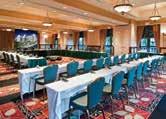
much space to host visitors, and less privacy for couples. Some may find too much togetherness gets on the nerves.
Life outside the home can be tough, too. Downsizers have to adjust to an unfamiliar community, and making new friends and social networks can be a challenge for even the most outgoing person. Moreover, those used to city life and all its amenities may find smaller communities a bit too sleepy for their liking.
“People often underestimate the impact downsizing and relocating is going to have,” says McMillan. “Many have a romanticized notion that life is going to be easier somewhere new in a smaller home, but most don’t realize just how embedded their lives are where they already live. They make a huge life change and then realize it’s not as easy as they thought to find replacements for all the little things they had in their lives. Whether it’s a new book club, or a new hockey team to play on, many will find the replacement an ersatz version of what they had before.”
Downsizing into a townhouse or condo also presents the challenge of possibly having to contend with difficult neighbours, or imperious members of
an elected strata council. Circumstances vary from one strata to the next, but anyone used to being king or queen of their own castle might soon chafe under the restrictions and obligations of common ownership.
“A lot of people who have lived in their own home for years might have difficulty adjusting to community living where your neighbours have a say in how you can live,” says McMillan. “There are tons of issues with stratas. Practical day-to-day issues, such as wanting to paint your door red, having a barbecue on your balcony, or putting in flooring, can become annoying and stressful sources of conflict, sometimes resulting in fines and legal action.”
McMillan wryly observes that there are often two

categories of people who get elected to strata councils: those with nothing better to do than exert control over their fiefdom, and those who get involved to resist them. Accordingly, he suggests anyone thinking of buying a condo read the strata minutes to gain insight into what kind of people are involved, what they are doing, and if any fines have been issued, or matters taken to court. He says the minutes will also show if the group is proactive, or if they stick their heads in the sand on pressing concerns. Likewise, he says it’s important to read the strata’s bylaws, and understand that they can pass new bylaws. And while a townhouse may mean fewer neighbours to deal with than a condo, it is still a strata and therefore no less complicated when it comes to dealing with neighbours who may have different ideas.
On the upside, not all strata councils are riven with strife, and for those who choose to get involved a condo strata can be a ready-made community.
“If it’s a good strata, and you’re not stubborn, downsizing into a condo can be great,” says McMillan. “It’s a question of having an honest conversation with yourself — are you going to mix
with other strata members like oil and water, or water and water?”
Certainly, the decision to downsize calls for personal insight, and honesty between couples. An outgoing person who enjoys new challenges and adventure is going to have more options, and be better equipped to make the transition, than someone who is set in their ways and doesn’t like change.
Carefully examining the motivations for downsizing helps, too. Is there a personal reason to downsize and relocate, such as being closer to family? Perhaps the physical demands of owning a large property are becoming too taxing. Or maybe the decision is being driven by a financial strategy.
Questions abound from one person to the next, but whatever the reasons, those who understand themselves, and their reasons for wanting to transition to a smaller home, and their investment options, are better equipped to assess the ups and downs of downsizing.
The information provided in this article is not legal or financial advice, and should not be relied upon for making decisions.




BY SUE DUNHAM

Seaflora Skincare produces a variety of seaweed-based products. Seaflora Skincare photo

WHAT COMES TO MIND when you hear the word “seaweed”? Most people probably imagine dried up piles of decomposing algae along the shoreline, full of flies and undesirable aromas. But wade just a few metres from shore into the cold, clear waters of the Pacific Ocean and below the surface lies a diverse forest of seaweeds, rich in colour, beauty and lifegiving properties.
“Seaweed” is actually a colloquial term that refers to several species of macroscopic, multicellular marine algae that are generally classified by colour type — red, green and brown. What is not obvious to the naked eye, however, are the remarkable properties and health benefits of certain seaweeds.
Asian cultures have long revered the nutritional value of seaweed as a food source. In fact, it was such a crucial part of the Japanese diet that legislation was introduced in the 8th Century confirming the right of citizens to pay their taxes in kelp form.
Europeans found uses, too. The ancient Greeks and Romans used seaweed mucilage to treat rashes, burns and wounds, and also introduced it into the diet of sailors to help ward off scurvy.
The chemical properties of seaweed also made it valuable as a source of fertilizer. Irish and Scottish farmers began tilling seaweed into their fields as far back as the 13th Century and the practice continues to this day.
Seaweed has numerous modern applications, too. As an industrial product, it is used in cosmetics, toothpaste and as a binding agent in paint, and it is showing considerable promise as a potential source of biofuel.
What makes seaweed so special is its large affinity for nutrients. With no root system, seaweed relies on photosynthesis and the filtration of ocean nutrients to grow. As such, mineral content of algae can range anywhere between 20 to 40 per cent per 100 grams, compared to 5 to 10 per cent commonly

The Willow Stream Spa introduced its 90-minute Salish Sea Vitality experience ($255) in May 2017, and has plans to develop a facial treatment, as well as a hands-and-foot experience. Heath Moffatt photo
found in fruits and vegetables grown on land. Move over, kale; kelp is the new superfood.
Western societies are slowly cottoning on to what Eastern cultures have long appreciated — that seaweed is good for your health in many respects.
Diane Bernard, owner and founder of Seaflora Skincare in Sooke, appreciates the health and healing properties of seaweed better than most. As a young girl, she spent summers growing up on the Magdalen Islands where seaweed was a part of the family diet, and everyday life on the East Coast.
“As kids, we wanted to go screaming down the shoreline to get away from the seaweed broth our parents made us eat,” says Bernard. “They knew it was healthy for us, but it wasn’t until I moved to the West Coast as an adult that I began appreciating the nutritional value and health benefits of seaweed.”
In the 1990s Bernard began harvesting wild seaweed for local chefs at high-end resorts on Vancouver Island. Through those connections she


developed relationships with several resort spas, and began supplying harvested seaweed for skincare treatments.
Packed with an unusually high concentration of vitamins, minerals, amino acids and antioxidants, seaweed’s natural anti-inflammatory compounds make it particularly good for treating skin conditions, such as eczema, acne and rosacea. It also acts as a cleanser, drawing excess fluid, dead skin cells and other impurities from the body, while at the same time conditioning, hydrating, and regenerating damaged tissue.
In 2001 Bernard began developing her own line of skincare products from local seaweed, and in 2003 she incorporated Seaflora Skincare, selling product to several high-end spas on Vancouver Island. She initially worked out of her kitchen with the help of her two teenage children, but eventually grew the business to the point where she now employs a staff of 10 locals, as well as representatives in Ontario, the U.S., Taiwan and Korea.
Beauty product made from seaweed is nothing new, but Bernard says what sets Seaflora Skincare products apart is the quality of local seaweed:
“It’s no secret that our oceans are in trouble on a global perspective, but in the Pacific Northwest our
ocean is still very pristine. We don’t have a lot of development and industry along the coastline so there is little in the way of upland pollutants.” Moreover, she adds, “The Strait of Juan de Fuca is cold, clean and fast moving with heavily oxygenated upwellings delivering abundant nutrients for seaweeds. The diversity is amazing: we have some 600 different species of seaweed along our coastline.”
It’s also worth noting that all Seaflora Skincare products are made from wild seaweed varieties gathered by hand, as opposed to monoculture seaweeds harvested by machines. Getting at them can be tricky, though: wild seaweeds like to grow on rocky shorelines, and the area Bernard is licenced to harvest, between Sooke and Jordan River, is largely inaccessible by road.
Bernard says the extra effort is worth it: “The red, green and brown algae here are crazy high in antioxidants, minerals and nutrients.” She adds, “We’re the only producer using USDA-certified organic seaweeds.”
That fact is not lost on Anita Voorsluys, Sales Manager, at the Willow Stream Spa in the Fairmont Empress Hotel in Victoria.
“Spas have been using seaweed for its detoxifying and regenerative properties for centuries,” says



Seaweeds’ natural anti-inflammatory compounds helps improve sensitive skin, while enhancing elasticity and increasing moisture retention. iStock photo


fronds are removed and a refreshing shower rinse with a wild seaweed chamois removes any residual product. What follows is a relaxing body massage using a combination of Sea Kelp Lotion and Seaweed Gel that leaves the skin feeling smooth and revitalized.
“Seaweed is incredibly rich in vitamins and minerals, and its superior bioavailability allows our bodies to easily absorb and process the nutrients through the skin,” says Voorsluys. “As a place of wellness, we want to offer treatments that are nourishing for both body and mind; our new Salish Sea Vitality experience does just that.”

BY GARTH EICHEL

A RESTAURANT MEAL IS MORE than the sum of its ingredients. Any dish served is the culmination of a chef’s training and culinary experiences, as well as a signal of his or her future aspirations.
Guests at the Westin Bear Mountain Golf Resort & Spa in Victoria are getting a taste of things to come since Chef Mahesh Bhambure took over as Restaurant Chef under Executive Chef Mark Wadsworth in March. While just 30 years old, Bhambure brings a wealth of education and experience to his new role, and the remarkable new restaurant menu he rolled out on May 1 suggests he is on an ambitious trajectory.
Born and raised in Pune, India, Bhambure first learned to cook from his mother and father, who
encouraged him to develop his passion for cooking. “As a teenager, I used to eat out at restaurants and food kiosks, then go home and try to recreate dishes I had tried,” recalls Bhambure. “We didn’t always have the same ingredients, so my parents encouraged me to experiment with what was available in our home. I learned to be creative and innovate.”
The approval and encouragement of his family spurred Bhambure on. He got his first job working at a bakery where he says he learned the importance of food presentation.
“Looks matter,” insists Bhambure. “People eat with their eyes first. If something is not pretty on the plate it is going to be unappealing.”
With that in mind, he enrolled in a four-year culinary program at the University of Pune, while interning as a pantry cook at a large Indian hotel chain, the Taj Group of Hotels.
Like most interns, Bhambure started at the bottom in the kitchen, cutting onions all day long. Rather than be deterred, he used it as an opportunity for self-improvement.
“There is a reason behind every job in the kitchen,” says Bhambure. “I used the experience to speed up and improve my cutting technique.
More lessons followed. The Tag Group catered to a significant number of Chinese guests, which gave Bhambure his first taste of fusion cooking — Indo-Chinese cuisine.
“We’d take components from Chinese cooking and put an Indian twist on it,” says Bhambure. “I soon became fascinated with the appearance, aromas, tastes and textures of all kinds of international cuisine. Food is so different from one country to the next. I wanted to travel the world and discover new types of cuisine.”
Bhambure got his wish shortly after graduating with honours from the University of Pune. He obtained a U.S. work visa and landed his first job at the Vail Ski Resort in Vail, Colorado.
It was not what he expected.
“It was a huge culture shock,” recalls Bhambure. “I grew up in India. Suddenly I was in a small, seasonal ski town that was sparsely populated much of the year. I was so lonely and lost.
“Even the food was strange. I had to learn about North American meats, fruits, vegetables and cheeses. Nothing was familiar.”
Nevertheless, Bhambure applied himself to his work and in time found his feet with the help of
colleagues. He returned to India when his work visa expired, but he reapplied and returned to the U.S. the following year, finding work in the kitchen of a Marriot Hotel in Baltimore, Maryland.
Once again, Bhambure started at the bottom and worked his way up through the kitchen’s ranks, eventually rising to the position of sous chef. Over time he gained confidence he could work as a chef outside of India.
In 2009 Bhambure’s wanderlust carried him to Vancouver, but work was hard to find. His culinary training at the University of Pune wasn’t recognized by high-end restaurants, and many of his Baltimore references had by then moved on to other jobs. Things got desperate when only $30 remained in his bank account, and so Bhambure swallowed his pride and took a job washing dishes at a Cactus Club Cafe in Vancouver.
Fortunately, management quickly recognized Bhambure’s talents were being wasted in the dishpit and he was moved into the kitchen where, once again, he began working his way up through the organization. As always, there was a silver lining: “I learned about speed, consistency, organization and efficiency,” says Bhambure. “The Cactus Club

taught me the business side of running a kitchen.”
Despite his admiration and affection for Cactus Club Cafe, Bhambure knew his ambitions as a chef in this country would never be realized without Red Seal certification. Accordingly, Bhambure moved to Toronto in 2011 to attend the Culinary Arts program at George Brown College where he graduated with honours the following year.
While going to school, Bhambure supported himself working at TOCA restaurant in The RitzCarlton hotel where he again started at the bottom of the kitchen’s pecking order. No stranger to coming up through the ranks, he quickly distinguished himself, first rising to the position of saucier, and then First Chef.



Bear Mountain is the premier golf experience in Canada with two Nicklaus Design golf courses.
Book your Summer Stay & Play Package today.
Rates from $209 per person!
Choose between the challenging Mountain Course or the more serene Valley Course.


It was at The Ritz-Carlton that Bhambure had the opportunity to work with renowned Michelin two star chef, Oliver Glowig.
“Chef Glowig influenced me so much. He taught me the importance of minor details,” says Bhambure. “I would love to be a Michelin star chef like him. I’m very positive about my goal of making it happen.”
Glowig is just one of several chefs Bhambure credits for guiding him on his culinary career. From Pune, Vail and Baltimore, to Vancouver and Toronto, he has worked alongside chefs from all over the world, each imparting valuable lessons that have influenced Bhambure’s eclectic cooking style, which now spans multiple cultures and nationalities.
“I like fusion cuisine a lot, but there is more to fusion than simply combining two culinary traditions,” says Bhambure. “For me, it means mixing multiple aspects of several different cuisines to create something original that no one has ever thought of before.” He adds, “There are no constraints when combining ingredients. If you can imagine it you can taste it.”
Bhambure continued experimenting and innovating when he returned to Vancouver as Chef de
Partie at the MARKET by Jean-Georges in the Shangri-La Hotel. He was later promoted to sous chef and saw further prospects within the organization, but when the opportunity to run the restaurant program at the Westin Bear Mountain Golf Resort & Spa was offered he didn’t hesitate.
In person, Bhambure is soft-spoken and gracious, but he clearly has ambitions and goals he intends to realize.
“I don’t want to start at the bottom anymore!” laughs Bhambure. “I want to put my stamp on the menu at Bear Mountain and really wow people with high-end, elegant food that will keep them coming and trying new things each time.”
I decided to see for myself, so on a lovely Friday evening I took my wife, Heather, out for dinner at Bear Mountain Resort’s Bella restaurant. It was a gorgeous, warm summer evening so we decided to dine outside on the patio overlooking rolling green hills. The sun was just starting to set, casting soft, amber light over the landscape.
We decide to take in the view with a cocktail before ordering our meal, opting for a Master’s
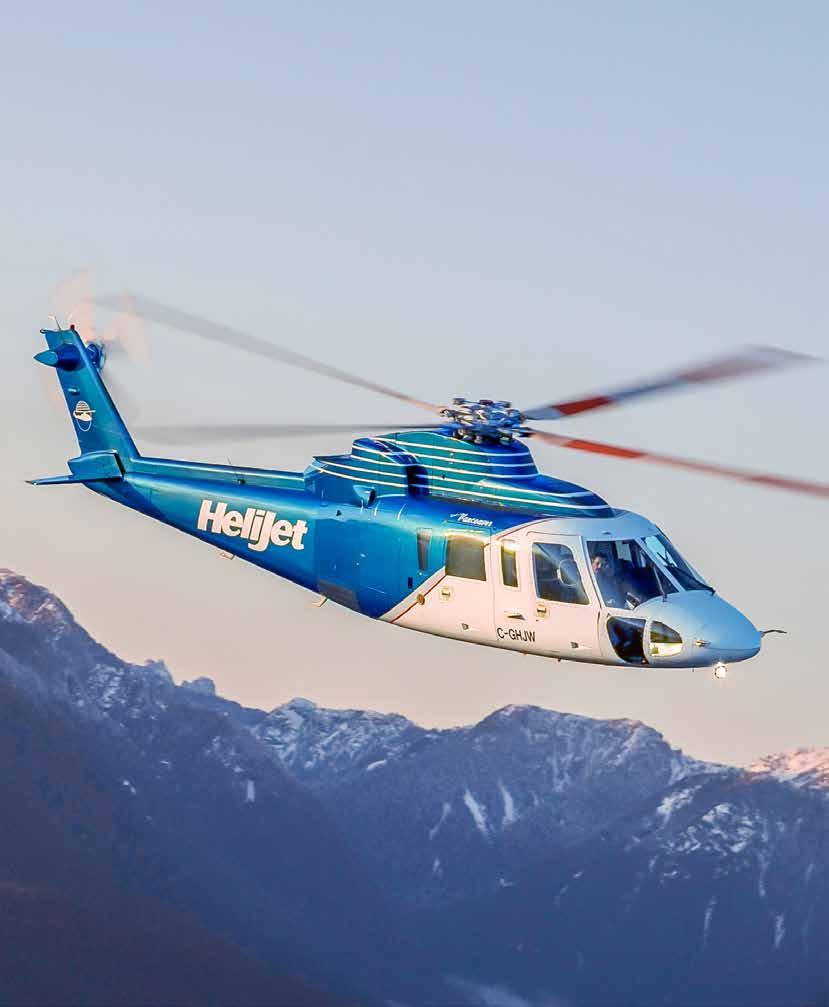
Cup — a fresh, fruity and lively cocktail combining Pimms, muddled strawberry, cucumber and mint. It’s the perfect libation to enjoy on a summer patio. Heather and I linger over our drinks trying to drag out the golden hour before hunger eventually forces us to order appies.
For her starter, Heather decides on the cauliflower veloute. A velouté is a classic French sauce, usually made from chicken, veal or fish stock, thickened with a white roux, but Bhambure has put a unique twist on tradition, employing cauliflower, truffle puree and parmesan foam. The result is extraordinary, emanating earthy aromas, and savoury umami flavours that glide on velvety texture.
Heather lets me sample her veloute on condition I give her one of my seared scallops, served with orange beet puree, pepper compote and parsnip chips. That’s a hard choice: my dish is a work of art and I’m reluctant to disturb the arrangement of golden scallops and swirls of purple puree. Nevertheless, I relent and smear a scallop for my wife.
“Noooooo,” she cries. “I wanted to take a picture of it first!”
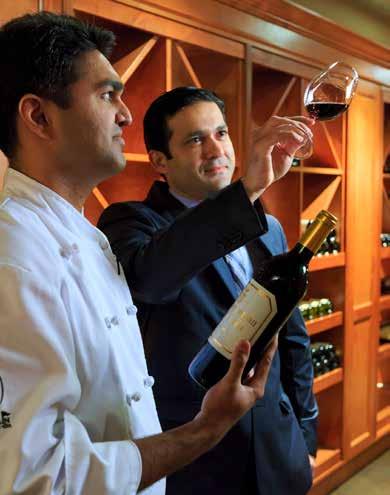
My remorse is tempered by the remaining scallops, which are as sweet and delicate as any I have ever eaten. They taste even better when paired with a chilled glass of 2016 Millstream Chenin Blanc from South Africa, recommended by Bella’s gracious sommelier, Bipin Bhatt. (Bhat suggests pairing a pink cava with the veloute, but Heather is so enchanted with my Chenin that she opts for a glass of her own.)
Progressing to mains, Heather orders oven-baked halibut, served with herb-crushed potatoes, celeriac puree, peppercorn vinaigrette and shaved celery. When it arrives, her first reaction is to snatch her iPhone out of her purse and get photos before I can reach over and molest the presentation with my fork.
While she is busy uploading images to social media, I help myself to a taste. Like the scallops, the delicate elegance of the halibut is not overpowered by its subtle accompaniments. When matched with a 2014 glass of Cakebread Cellars Chardonnay from Napa, California, the meal ascends to the sublime.
Similarly, my magnificent beef tenderloin with olive crumbs and miso jus is only elevated by a glass of 2014 Kingston Estate Shiraz from Clare Valley, Australia. The rich, plummy red is an ideal complement for the savoury filet, which practically melts in the mouth.
Heather and I are both satiated, but decide to indulge in a final shared dessert — apple tarte tatin with raisin puree, vanilla ice cream and apple chip, paired with a glass of 20 Year Old Taylor Fladgate Tawny port.
Heather leans over to me and whispers, “Would it be tacky to take another photo?”
Perhaps it is, but I don’t want to pour cold water on the fun. Heather snaps away with glee, uploading to the considerable envy of all her Facebook Friends. That done, she takes a bite and sighs with a broad smile that tells me this has been a very memorable meal.
“That is the most rewarding thing for me — to give people pleasure through my cooking,” says Chef Bhambure. “Seeing a smile on the face of someone when they first sample a dish is the most honest reaction.” With a smile of his own, he adds, “It reminds me of cooking for my family.”
Chef Bhambure (left) and Sommelier Bipin Bhatt collaborated on wine pairings for each dish on the Resort’s new menu.






























